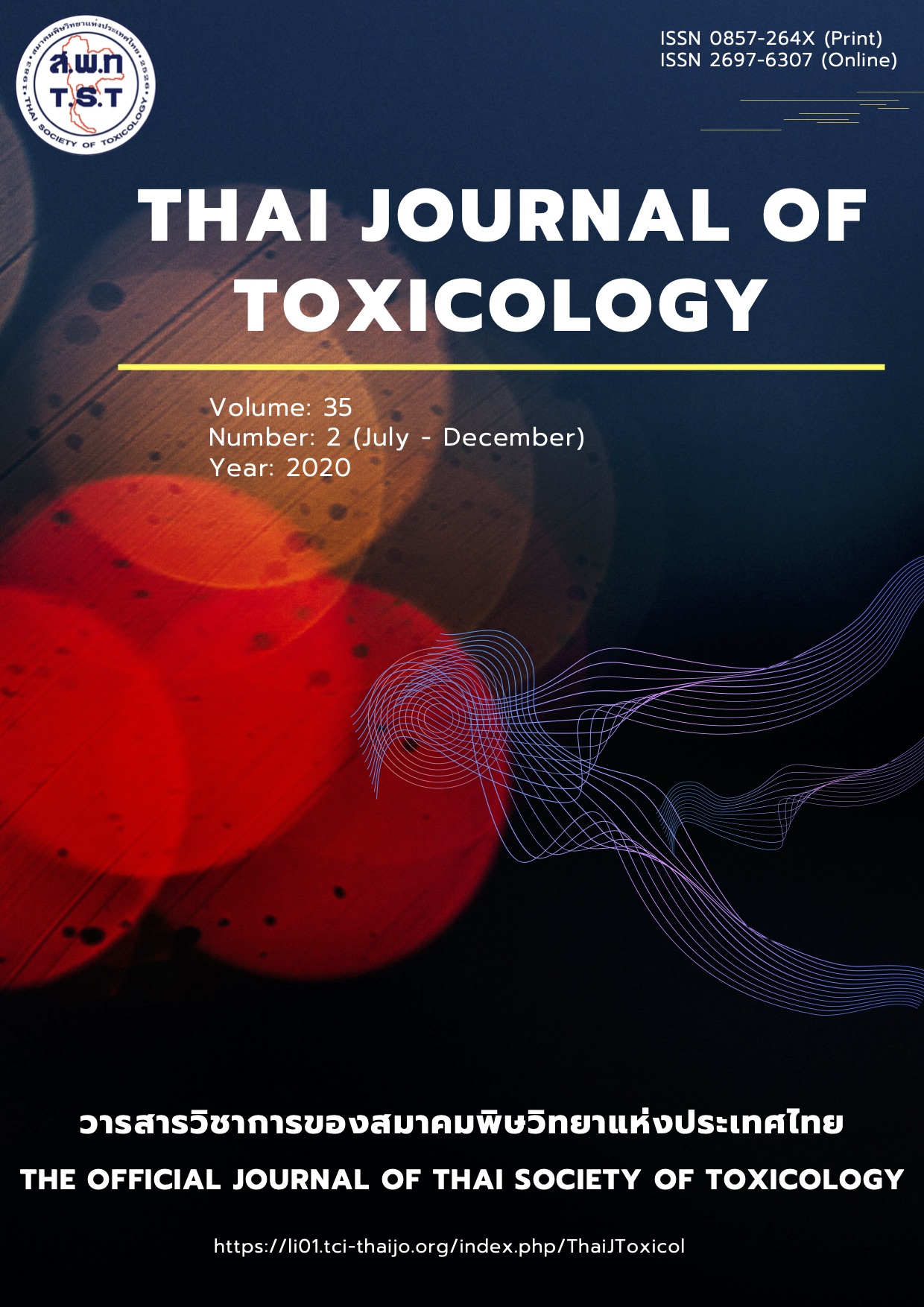The Situation of Mushrooms Food Poisoning in Thailand: Symptoms and Common Species List
Main Article Content
Abstract
Wild mushroom is widely consumed food and source of income to local communities in Thailand. The epidemiology of mushroom poisoning increased during rainy season, which is the growing season for wild mushrooms and villagers collect as well as consume them. Hence, this study aimed to identify mushroom samples from clinically reported cases during 2012 to 2019 based on morphology, DNA barcoding and determine their toxins using chemical methods. Our results revealed that gastrointestinal irritant mushroom poisoning was the most frequently encountered, followed by other types of mushroom poisoning, including neurotoxic and cell toxicity. These included five main lethal species; Amanita brunneitoxicaria, A. exitialis, A. gleocystidiosa, A. fuliginea and Russula subnigricans. The toxins discovered from the clinical samples were alpha-amanitin, beta-amanitin muscarine, phallacidin & phalloidin. These cases of mycetism occurred mainly due to misidentification and misconceptions about indigenous knowledge of the nontoxic and toxic mushrooms.
Article Details
References
อุทัยวรรณ แสงวณิช อัจฉรา พยัพพานนท์ เจนนิเฟอร์ เหลืองสอาด และคณะ. บัญชีรายการทรัพย์สินชีวภาพ เห็ด สำนักงานพัฒนาเศรษฐกิจจากฐาน ชีวภาพ (องค์การมหาชน) 2556.
Chandrasrikul A, Suwanarit P, Sangwanit U, et al. Checklist of Mushrooms (Basidiomycetes) in Thailand, Office of Natural Resources and Environmental Policy and Planning, Bangkok, Thailand. 2011.
ขวัญุเรือน นาคสุวรรณกุล สิทธิพร ปานเม่น สุจิตรา สิกพันธ์ และคณะ. คู่มือการศึกษาลักษณะทางสัณฐานวิทยาของเห็ด เห็ดพิษและการเฝ้าระวังในชุมชน กรมวิทยาศาสตร์การแพทย์ กระทรวงสาธารณสุข 2562.
Li GJ, Hyde KD, Zhao RL, et al. Fungal diversity notes 253–366: taxonomic and phylogenetic contributions to fungal taxa. Fungal Divers 2016; 78(1): 1-237.
สิทธิพร ปานเม่น อัจจิมา ทองบ่อ ชุลีพร จันทรเสนา และคณะ. คู่มือเห็ดมีพิษ. กรมวิทยาศาสตร์ การแพทย์ กระทรวงสาธารณสุข 2561.
Ramchiun S, Sikaphan S, Leudang S, et al. Molecular characterization and liquid chromatography-mass spectrometric multiple reaction monitoring-based detection in case of suspected phalloides syndrome poisoning. J Assoc Med Sci 2019; 52(1): 47-54.
Parnmen S, Sikaphan S, Leudang S, et al. Molecular identification of poisonous mushrooms using nuclear ITS region and peptide toxins: a retrospective study on fatal cases in Thailand. J Toxicol Sci 2016; 41(1): 65-76.
Bresinsky A. A colour atlas of poisonous fungi: A handbook for pharmacists, doctors, and biologists. London: Wolfe Publishing Ltd. 1989.
Schoch CL, Seifert KA, Huhndorf S, et al. Nuclear ribosomal internal transcribed spacer (ITS) region as a universal DNA barcode marker for Fungi. Proceedings of the National Academy of Sciences. 2012; 109(16): 6241-6.
White J, Weinstein SA, De Haro L, et al. Mushroom poisoning: A proposed new clinical classification. Toxicon 2019; 157: 53-65.
Lin S, Mu M, Yang F, et al. Russula subnigricans poisoning: from gastrointestinal symptoms to rhabdomyolysis. Wilderness Environ Med 2015; 26(3): 380-3.
Chu EY, Anand D, Dawn A, et al. Shiitake dermatitis: a report of 3 cases and review of the literature. Cutis 2013; 91(6): 287-90.


